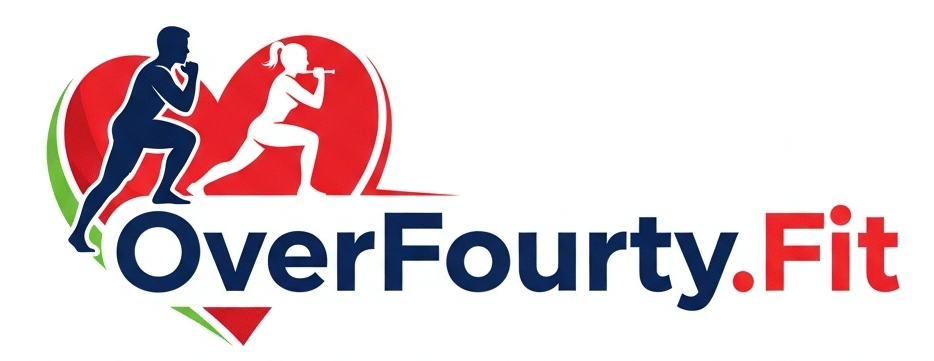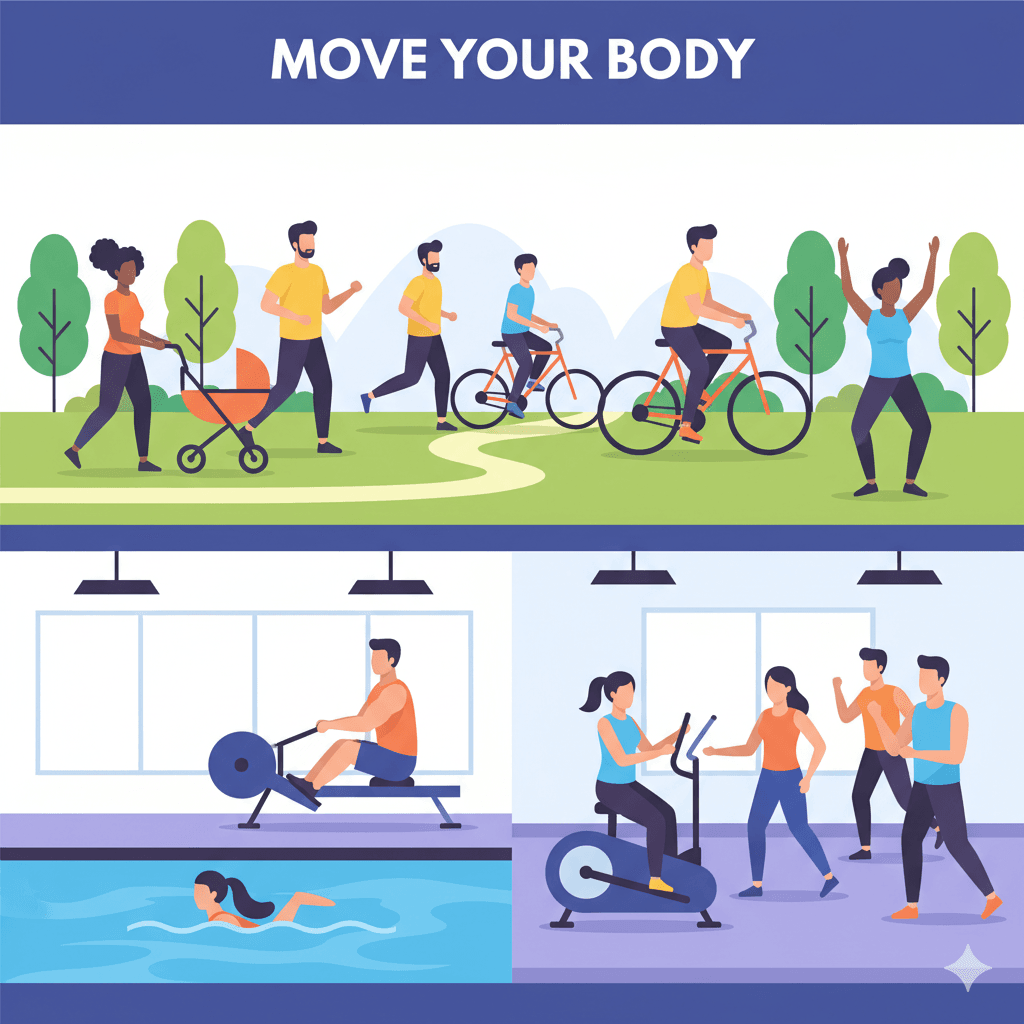Aerobic Exercise Examples: Simple Workouts to Boost Your Heart Health
Aerobic exercise examples include walking, running, cycling, swimming, dancing, and group fitness classes. These activities keep your heart pumping, improve endurance, and support overall health. The good news is that aerobic workouts can be easy, like a brisk walk, or tough, like a spin class. It all depends on your fitness level and goals.
What Is Aerobic Exercise?
Aerobic exercise, often called “cardio,” is any rhythmic activity. It raises your heart rate and breathing for a long time. Unlike short bursts of strength training, aerobic workouts focus on endurance and help your body use oxygen more efficiently.
Regular aerobic exercise can:
- Strengthen your heart and lungs
- Lower blood pressure and cholesterol
- Improve circulation
- Burn calories and support weight management
- Boost mood and reduce stress
Common Aerobic Exercise Examples
Here are some of the most effective aerobic exercises you can add to your routine:
1. Walking
Walking is one of the easiest ways to get started with cardio. A brisk pace is best for heart health, but even a 20-minute stroll can improve circulation and energy levels.
2. Jogging or Running
Jogging and running are higher-intensity aerobic options. They help build endurance, strengthen your heart, and burn more calories in less time.
3. Cycling
Whether on a stationary bike or outdoors, cycling is excellent for leg strength and cardiovascular fitness. It’s also a low-impact option that’s easier on the joints compared to running.
4. Swimming
Swimming works the entire body while being gentle on the joints. Laps, water aerobics, or even treading water provide a full-body cardio workout.
5. Dancing
From Zumba to hip-hop to ballroom, dancing raises your heart rate while making exercise feel fun. Group dance classes are especially motivating.
6. Rowing
Rowing machines deliver both aerobic and strength benefits, engaging muscles in the arms, back, and legs while keeping your heart rate elevated.
7. Elliptical Training
The elliptical is a popular gym machine that mimics running without the impact. It’s great for people looking for a joint-friendly cardio workout.
8. Group Fitness Classes
Step aerobics, kickboxing, circuit training, or spin classes provide structured workouts with built-in motivation and variety.

Aerobic Exercise by Intensity Level
If you’re unsure where to start, here’s a quick breakdown:
- Low-Intensity: Walking, light cycling, gentle swimming
- Moderate-Intensity: Brisk walking, jogging, water aerobics, dancing
- Vigorous-Intensity: Running, HIIT-style cardio classes, fast cycling, rowing
The American Heart Association recommends at least 150 minutes of moderate-intensity aerobic activity per week, or 75 minutes of vigorous activity, for optimal heart health.
Final Thoughts About Aerobic Exercise Examples
Aerobic exercise doesn’t have to be complicated. Whether you choose a morning walk, a swim at the pool, or a fun dance class, the key is consistency. Pick activities you enjoy, mix them up for variety, and aim for at least 20 to 30 minutes per session. Over time, you’ll notice better endurance, improved energy, and stronger overall health.
FAQs About Aerobic Exercise Examples
Is yoga considered aerobic exercise?
Generally, yoga is not classified as aerobic exercise. While it offers flexibility, balance, and strength benefits, most yoga sessions don’t keep your heart rate elevated long enough to be considered cardio.
What is the best aerobic exercise for beginners?
Walking is the easiest and safest starting point. Once comfortable, you can progress to light cycling, dancing, or swimming.
Can aerobic exercise help with weight loss?
Yes. Since aerobic activities burn calories and boost metabolism, they can support weight loss when combined with a balanced diet.
4. How long should an aerobic workout last?
Aim for at least 20 to 30 minutes per session, three to five times per week. Beginners may start with shorter sessions and gradually build up.
Is aerobic exercise safe every day?
Yes, as long as you vary intensity and choose low-impact options when needed. Daily walking or light cycling is safe, but mix in rest or strength training to avoid overuse injuries.
What are the 10 examples of aerobic?
Ten examples of aerobic exercise include walking, jogging, running, cycling, swimming, dancing, rowing, elliptical training, hiking, and group fitness classes like step aerobics or kickboxing. All of these activities keep your heart rate elevated for an extended period, which improves cardiovascular endurance.
Does aerobic exercise lower triglycerides?
Yes. Regular aerobic exercise has been shown to lower triglyceride levels and improve cholesterol balance. Activities like brisk walking, cycling, and swimming help your body use fat for energy, which reduces the amount of triglycerides circulating in your blood.
What is the best aerobic exercise?
The best aerobic exercise is the one you can stick with consistently. Walking is the most accessible for beginners, while swimming and cycling are great low-impact options. For calorie burn and endurance, running and high-intensity cardio classes are highly effective.
Is 20 minutes of aerobics enough?
Yes, 20 minutes of aerobic exercise can be enough, especially if done at a moderate to vigorous intensity. For overall heart health, aim for at least 150 minutes of moderate-intensity cardio per week. Shorter sessions done consistently can still provide significant benefits.


![EoS Fitness 2025: Best Gym Membership for [Arizona/Florida/Texas] 3 EoS Fitness](https://overfourty.fit/wp-content/uploads/2025/05/EoS-Fitness-1-768x512.jpg)




